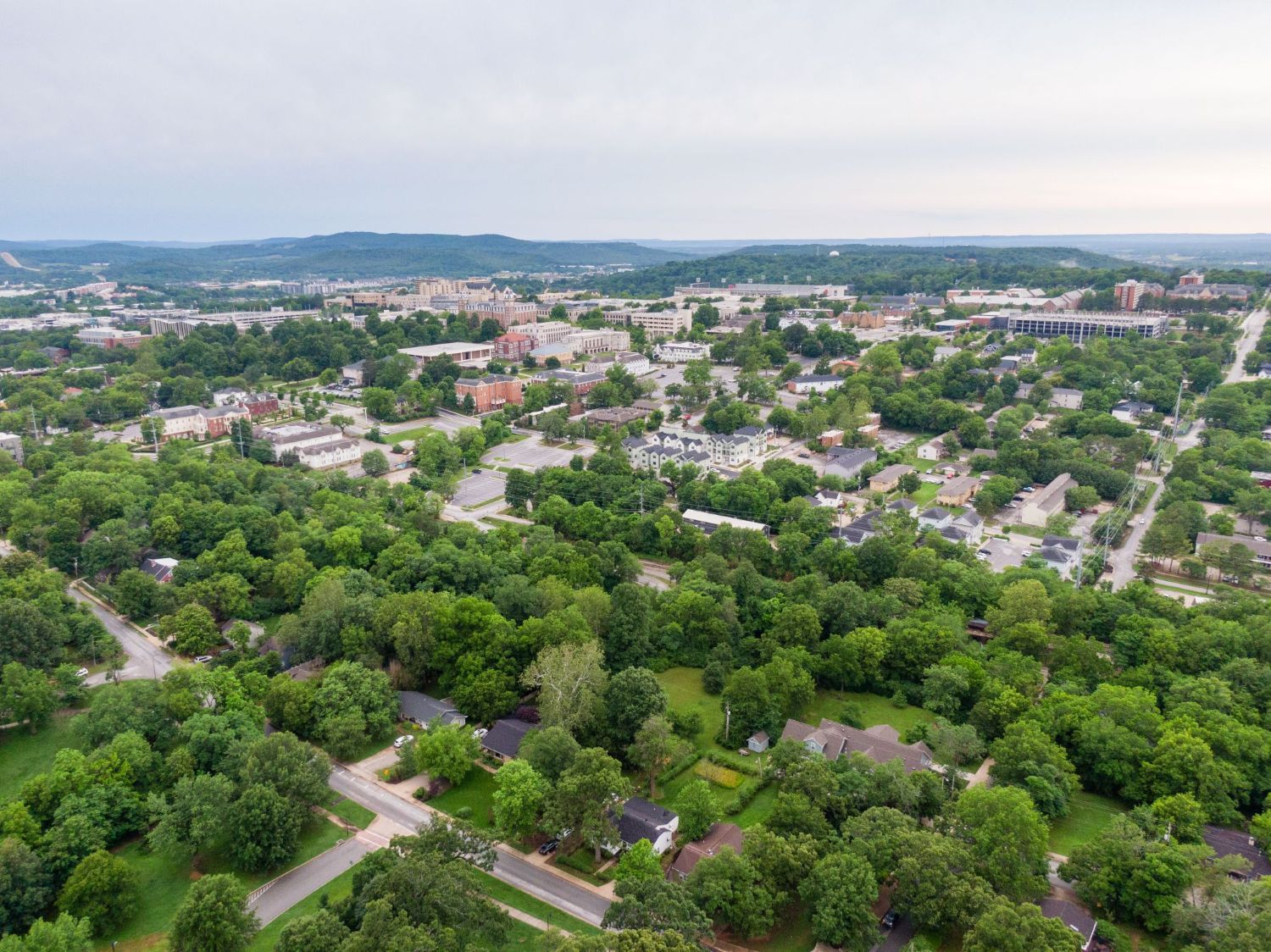It started with a demand for textbooks.
The business district near the campus of Kansas State University (K-State) emerged more than 120 years ago to sell books to students attending the nearby agricultural college. It came to be called Aggieville after the college’s nickname, the Aggies.
Over the decades, K-State diversified its educational offerings and Aggieville added restaurants, bars, and retail stores. Along the way, the eight square blocks became a destination to shop and dine, celebrate victories by the Wildcats (which replaced the Aggies), or take in the nightlife of Manhattan, Kansas.
Now a major refresh is underway.
“It’s really going to kick off a lot of good things for both Aggieville and Manhattan as a whole.”
About five years ago, the City of Manhattan launched an initiative to guide future investment and development in Aggieville. City officials assembled a team of consultants, designers, and contractors to help define and carry out the vision.
Olsson has been an important member of the team every step of the way.
“We are looking forward to these projects being a real catalyst for Aggieville,” said Mark Bachamp, business development senior specialist with Olsson. “We are already seeing more interest in the area from developers. It’s really going to kick off a lot of good things for both Aggieville and Manhattan as a whole.”
Olsson led the creation of the Aggieville Vision to Reality concept, which represented the key extension of the Aggieville Community Vision plan. Olsson helped city officials engage a broad section of community stakeholders to guide and shape the district’s future.
Community members wanted to maintain the essential character of Aggieville while giving the district “a more unified urban design that puts pedestrians first while focusing on a unique sense of place,” according to a video presentation that illustrates the vision. Though Aggieville is well known for its nightlife, the district is striving to broaden its appeal to a greater cross-section of Manhattan’s residents and visitors. Addressing fundamental infrastructure – sidewalks, streets, parking, lighting, and greenspace – is essential to attracting the investment to build new office/commercial space, apartments, lodging, and retail.
Primary streets on the north and south edges of the district were envisioned as gateways signaling the boundaries of Aggieville. These blocks would be reserved for buildings of up to five stories featuring commercial or retail on the lower levels and apartments on the upper floors. Increasing housing units in and around Aggieville is seen as a catalyst to attract a greater diversity of services and amenities to the district.
Planners identified a need to target underused space for construction of two parking garages. Locations were selected so that visitors to Aggieville would be no farther than a three-minute walk from parking. Solving the parking issue opened myriad possibilities for designers and planners.
“Our most treasured places, like Aggieville, were historically built without parking,” said Ben Chmiel, a community development planner with the City of Manhattan. “Too many parking lots really detract from the quality of the urban environment, which should be focused on the pedestrian experience and creating a unique sense of place. Garages afford us the best of both worlds by creating adequate parking supply with greater land-use efficiency, allowing more businesses to locate in Aggieville and giving us more flexibility for streetscape improvements.”
The city selected Olsson to design the first parking garage – a five-level, 450 stall structure with 8,000 square feet of ground floor retail/office space on a city-owned lot at the corner of North Manhattan Avenue and West Laramie Street. We teamed with Walkers Consultants, BBN Architects, and McCownGordon Construction on the project, which broke ground in early 2021, and is anticipated to be completed in 2022.
Olsson was selected to lead the project’s initial street redesign and set the tone for the remaining streetscape in the Aggieville district. Our rehabilitation of a section of 12th Street removed curbs and incorporated brick sidewalks, limestone planters and accents, and new lighting. In addition, retractable bollards were installed to close off the street for pedestrian-only use on weekends and special events.
Services we have provided to the city include civil engineering, landscape architecture, survey, geotechnical, and mechanical/electrical engineering.
The first steps for achieving the vision for Aggieville have already helped inspire the kind of development city officials had hoped to see. For example, construction has been completed on two new apartment buildings on the edge of the district, work is underway on a new hotel, and proposals are being sought for the purchase of a city parking lot for a new mixed-use development.
It’s exciting to see transformation taking place in a landmark business district that traces its beginnings to a single college bookstore.

































.avif)





































.avif)























